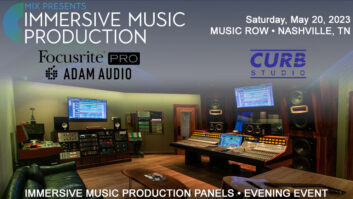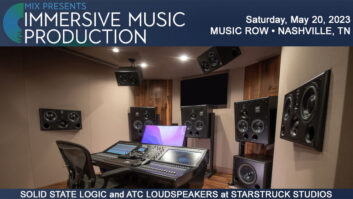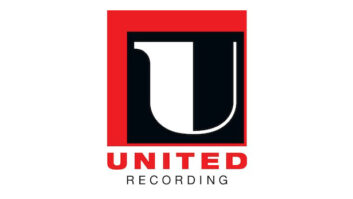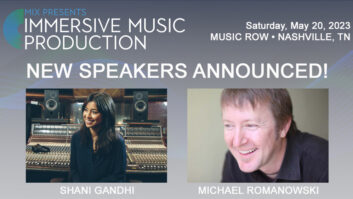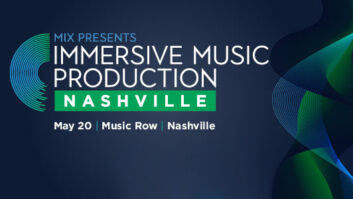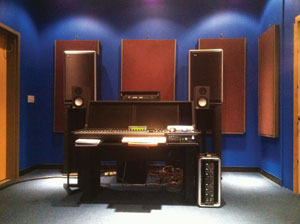
You can find sound facilities like Light Rail Studios in most major markets, typically in the warehouse district. Affordable lockout rehearsal spaces for local bands, sometimes a shooting or concert stage, a facility wired for sound and all types of production, including video. Often there is a recording studio, ranging anywhere from duct-taped wiring to full-on professional. These types of facilities, often unnoticed, occupy a core place in the music and recording industry, exposing countless musicians to their first taste of real technology, but more importantly, serving as a hub where creative musicians, engineers and budding producers first come together and feed off of each other.
Light Rail Studios, in one form or another, has been that kind of place in San Francisco since 1994, when Elton Cunniffe hooked up with a couple of friends in the basement of a three-story Victorian in the Haight district. There was a Tascam 4-track, later a Yamaha PM1000 console, and a bunch of music gear. Their friends were artists and musicians. It was mostly making records and staging events, back then, and the studio would get upgraded and grow over the years as they changed spaces. In late 2010, after building out a 20,000 square-foot space with a live room, control room, two production rooms and 36 rehearsal spaces, they took the name Light Rail Studios.
Being in today’s San Francisco, art, high-tech, digital content creation, manipulation, distribution and e-commerce sales are in Light Rails’s DNA. But the basis has always been music, with an analog mindset. The recording studio was founded in 1992 and has been central to the operation ever since, from that original Tascam 4-track to the MCI JH600/Otari MTR combo, and on to today, with a Gamble DCX 60 console, with digital control over 60 Class-A inputs, in Studio A.
Cunniffe, a producer/engineer and one of the owners of Light Rail, says that he knew his clientele would appreciate the best of both worlds. “A lot of projects we see today are self-financed by musicians or by their fans, who have already been down the road of trying to record themselves and know the value of recording in a professional studio,” he says. “They expect us to find the best-sounding equipment, to have the best-sounding room, and on an engineering/producing level, to work fast and creatively.” A friend, engineer Armando Torbinder, recommended the DCX 60.
“Of course I new the name, being from the Bay Area music scene, but had thought of Jim Gamble’s mixing boards as more of a live mixing desk than a recording studio console,” Cunniffe says. “I had always thought the Euphonix CS2000 to be an interesting desk both in sound and concept, and being designed and built in the Bay Area was a plus. Naturally, I was intrigued by the idea of a hand-built Gamble that was digitally controlled but still an analog mixing console under the hood.
“Initially it was the bus and matrix system that had me excited,” he continues. “It was far more expansive than our venerable 600 series MCI desk. But then it became about the sound. We had started mixing in the box with the advent of Pro Tools HD but were increasingly dissatisfied by the sound—but the automation and recall were critically important. The DCX gave the studio the flexibility of total recall of mixes but also allowed us to mix through an analog console. It had the headroom and the summing capability to handle 60-plus channels on the mixdown, and for the first time we were able to integrate our extensive collection of outboard limiters, compressors, reverb plates and effects units.
“A lot of the old gear is noisy and full of color and adds a lot to the recordings, but having the Gamble gives us a large-format analog mixing desk in a small footprint with compression and EQ on every channel—and the ability to save mixes for recall, which is critical when you have a busy studio with multiple engineers and producers working on lots of different projects during the week.”
In 2012, Light Rail Studios acquired an original 38-channel Trident A-Range to complement a large collection of Neve, Seimens, Langevin, etc. preamps and outboard gear, an extensive instrument collection, and the Meyer HD-1 monitoring.
Light Rail Studios will continue adding and expanding to accommodate all things audio and to play a part in the San Francisco scene. There are local artists on the walls of the gallery, community-based operas to be written, bands to record and release. “Don’t compromise; it’s you’re art!” Cunniffe concludes. “Your record deserves to sound great!”
